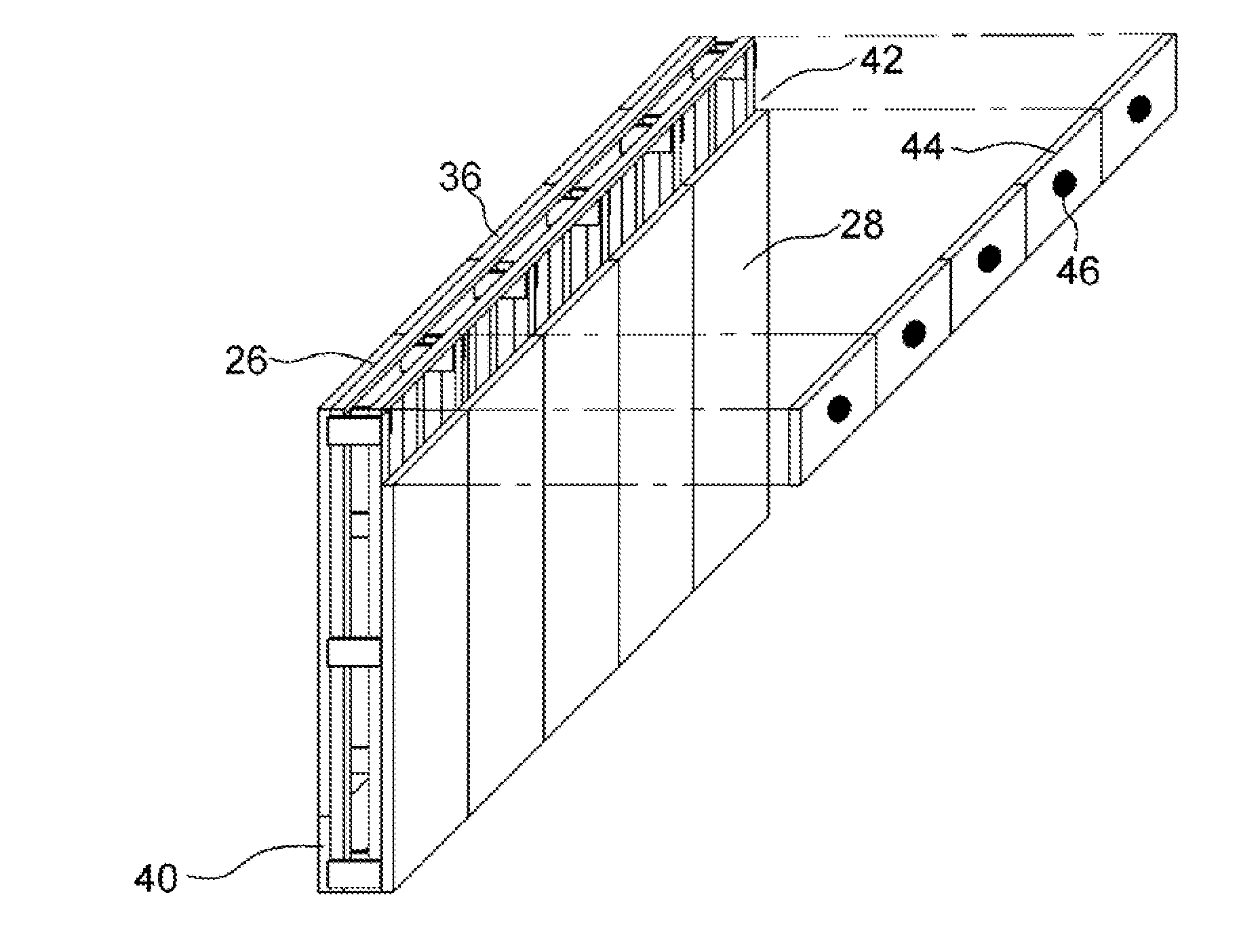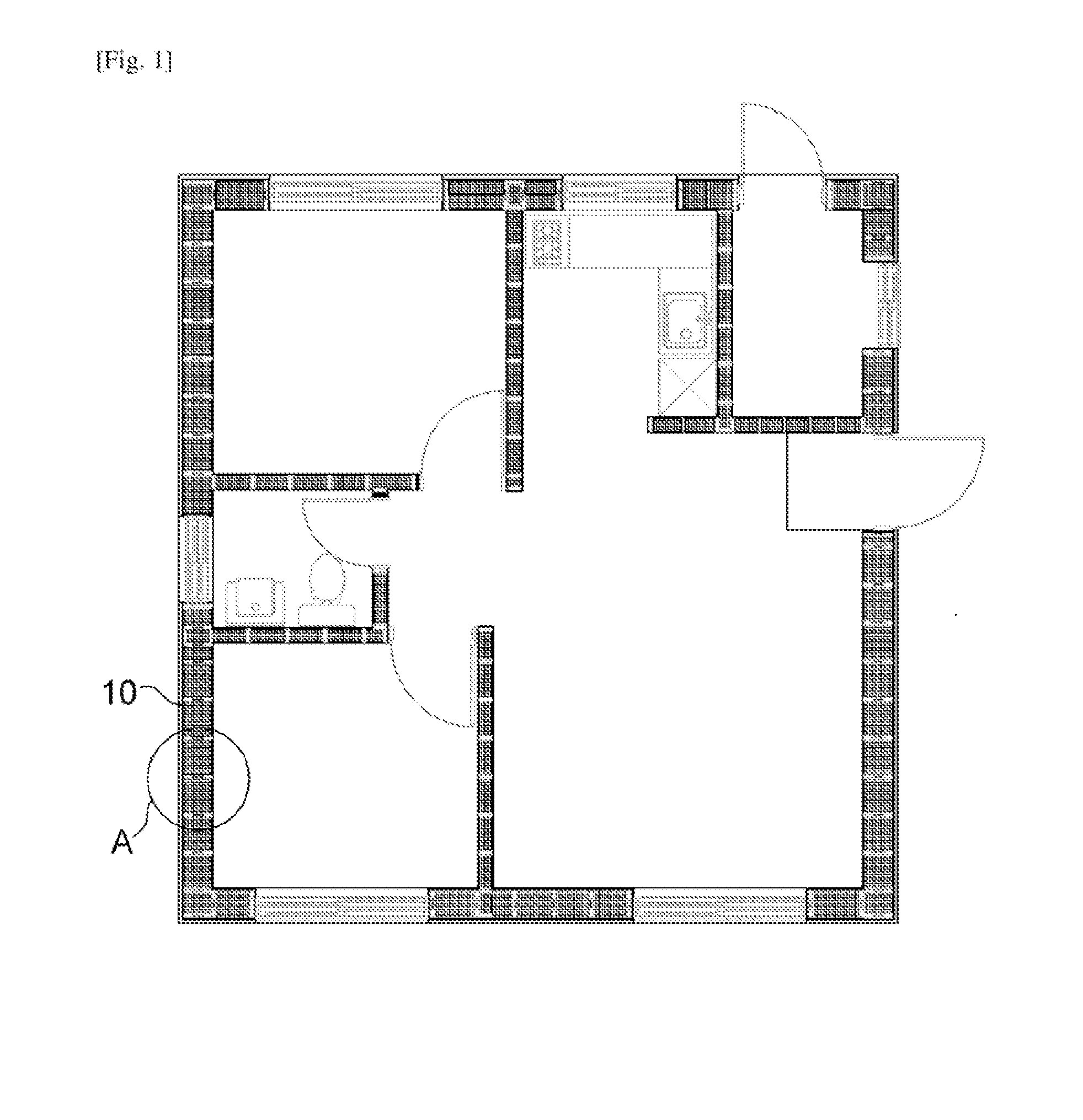Ecological building and insulation structural body thereof and method for assembling insulation structural body
a technology of ecological building and structural body, applied in the direction of building structure, heat insulation, walls, etc., can solve the problems of poor insulation, higher energy consumption of building structure than that of automobiles, and a portion of the problem of greenhouse gas emission, so as to prevent sound diffraction and resonance, improve sound insulation, and improve sound insulation
- Summary
- Abstract
- Description
- Claims
- Application Information
AI Technical Summary
Benefits of technology
Problems solved by technology
Method used
Image
Examples
Embodiment Construction
[0056]Hereinafter, embodiments of the present invention are described in detail with reference to the accompanying drawings. The terms used herein should be interpreted not in typical or dictionary definitions but to comply in concept with the technical matters of the present invention.
[0057]The configurations disclosed in the specification and the drawings are mere examples and do not overall represent the technical spirit of the present invention. Therefore, various changes may be made thereto, and equivalents thereof also belong to the scope of the present invention.
[0058]According to the present invention, the ecological building structure may be applied as shown in FIG. 1, and insulation structures according to the present invention may be applied to walls.
[0059]In other words, an embodiment of the present invention may apply to a wall 10 of the ecological building structure as shown in FIG. 1. As shown in FIG. 2, the wall 10 includes outer vertical pillars 20, inner vertical p...
PUM
 Login to View More
Login to View More Abstract
Description
Claims
Application Information
 Login to View More
Login to View More - R&D
- Intellectual Property
- Life Sciences
- Materials
- Tech Scout
- Unparalleled Data Quality
- Higher Quality Content
- 60% Fewer Hallucinations
Browse by: Latest US Patents, China's latest patents, Technical Efficacy Thesaurus, Application Domain, Technology Topic, Popular Technical Reports.
© 2025 PatSnap. All rights reserved.Legal|Privacy policy|Modern Slavery Act Transparency Statement|Sitemap|About US| Contact US: help@patsnap.com



